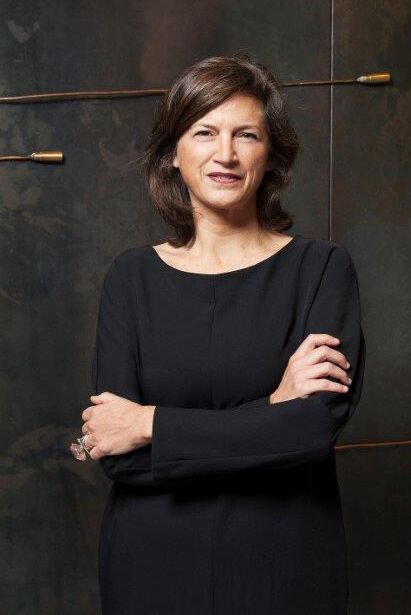Amédée Ozenfant *

(Saint-Quentin 1886 – 1966 Cannes)
Nature morte, verre et carafe, 1925, signed Ozenfant, watercolour, gouache on thick paper, 36 x 27 cm, framed
Provenance:
The artist
Galerie Percier, Paris (label on the reverse)
Galerie Berri-Lardy, Paris, 1964
Jean Bauret Collection, 1974
European Private Collection
Literature:
Pierre Guénégan, Amédée Ozenfant 1886–1966, catalogue raisonné des
œuvres sur papier, London, 2016, no. 1925/OP-008, ill. pp. 82 and 253
This composition is informed by the Purist aesthetic as developed by Amédée Ozenfant and Le Corbusier in 1918. Drawing on pre-1914 Cubism, particularly the coolly rational interpretation of Juan Gris, they dismissed its subsequent evolution as too decorative and unordered. They felt that the chaos of the natural world should be dispelled by the organizing mechanisms of the human mind. This conviction became a moral imperative that Ozenfant and Le Corbusier attempted to uphold in their work.
Ozenfant used the following metaphor to describe the function of rational thought: “A lens concentrates the diffuse rays of the sun and creates fire by converging those rays. To converge is to refine something in nature, so as to render it more concentrated, compact, pene-trative, intense: it helps to facilitate the mani-fes-tations of that phenomenon and to render it effective and useful for humanity.” Ozenfant’s application of this principle to „Nature morte, verre et carafe“ results in a composition that is lucid and geometric. Purism, with its principle of the rational instead of the decorative, stands at the beginning of a new aesthetic that continued to be felt in Functionalism. www.guggenheim.org
Tags:
Amédée Ozenfant, Amedee Ozenfant
Specialist: Mag. Patricia Pálffy
 Mag. Patricia Pálffy
Mag. Patricia Pálffy
+43-1-515 60-386
patricia.palffy@dorotheum.at
04.06.2019 - 17:00
- Realized price: **
-
EUR 45,300.-
- Estimate:
-
EUR 40,000.- to EUR 60,000.-
Amédée Ozenfant *
(Saint-Quentin 1886 – 1966 Cannes)
Nature morte, verre et carafe, 1925, signed Ozenfant, watercolour, gouache on thick paper, 36 x 27 cm, framed
Provenance:
The artist
Galerie Percier, Paris (label on the reverse)
Galerie Berri-Lardy, Paris, 1964
Jean Bauret Collection, 1974
European Private Collection
Literature:
Pierre Guénégan, Amédée Ozenfant 1886–1966, catalogue raisonné des
œuvres sur papier, London, 2016, no. 1925/OP-008, ill. pp. 82 and 253
This composition is informed by the Purist aesthetic as developed by Amédée Ozenfant and Le Corbusier in 1918. Drawing on pre-1914 Cubism, particularly the coolly rational interpretation of Juan Gris, they dismissed its subsequent evolution as too decorative and unordered. They felt that the chaos of the natural world should be dispelled by the organizing mechanisms of the human mind. This conviction became a moral imperative that Ozenfant and Le Corbusier attempted to uphold in their work.
Ozenfant used the following metaphor to describe the function of rational thought: “A lens concentrates the diffuse rays of the sun and creates fire by converging those rays. To converge is to refine something in nature, so as to render it more concentrated, compact, pene-trative, intense: it helps to facilitate the mani-fes-tations of that phenomenon and to render it effective and useful for humanity.” Ozenfant’s application of this principle to „Nature morte, verre et carafe“ results in a composition that is lucid and geometric. Purism, with its principle of the rational instead of the decorative, stands at the beginning of a new aesthetic that continued to be felt in Functionalism. www.guggenheim.org
Tags:
Amédée Ozenfant, Amedee Ozenfant
Specialist: Mag. Patricia Pálffy
 Mag. Patricia Pálffy
Mag. Patricia Pálffy
+43-1-515 60-386
patricia.palffy@dorotheum.at
|
Buyers hotline
Mon.-Fri.: 10.00am - 5.00pm
kundendienst@dorotheum.at +43 1 515 60 200 |
| Auction: | Modern Art |
| Auction type: | Saleroom auction |
| Date: | 04.06.2019 - 17:00 |
| Location: | Vienna | Palais Dorotheum |
| Exhibition: | 25.05. - 04.06.2019 |
** Purchase price incl. buyer's premium and VAT
It is not possible to turn in online buying orders anymore. The auction is in preparation or has been executed already.
